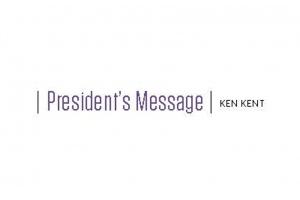By Shawna Ackerman
Several years ago, the Academy was invited to participate in a daylong session with the U.S. Government Accountability Office to discuss businesses’ actions to build resilience to climate-related risks and the interdependency of business and government resilience. As we discussed various resiliency efforts from water conservation to future building practices, we quickly determined that there was not a common definition of what resiliency meant or how it could be measured.
About a year later, the Department of Homeland Security developed a draft concept paper to measure community resiliency. In that paper, the definition of community resilience, presented in the context of disaster preparedness and climate change, is “the ability of the community to adapt to changing conditions, withstand disruption and rapidly recover from emergencies.”[1]
Clearly, actuaries can and do play a role in promoting and enhancing resiliency—whether that be resiliency in the communities in which we live and work or resiliency in financial security systems. But what does it mean for us to build and maintain a resilient profession?
Over the years, the Academy has built up a professionalism infrastructure consisting of four essential elements: the Code of Professional Conduct, actuarial standards of practice (ASOPs), the U.S. Qualification Standards (USQS), and the Actuarial Board for Counseling and Discipline. Building the infrastructure is the first step.[2] Maintaining and improving that infrastructure are necessary steps to retain our resiliency. Both occur at the individual and community level. Maintenance, at the individual level, is an actuary’s daily exercise of adhering to the standards of practice and code of conduct. Improvement at the individual level in our knowledge is also maintenance, as we are each required to meet continuing education requirements of the USQS.
At our actuarial community level, maintenance and improvement are also linked, as we examine and address changing conditions that are potentially disruptive. As an example, the newly constituted Data Science and Analytics Committee that is part of the Risk Management and Financial Reporting Council is actively monitoring developments in Big Data and its implications for the U.S. actuarial profession. As with all Academy committees, the focus is and will be on public policy and professionalism implications. Another example—the Actuarial Standards Board (ASB) is continuously revising existing ASOPs and drafting new ones to reflect appropriate practice in an ever-changing landscape. A proposed Modeling ASOP is currently in its fourth exposure draft—evidence that the ASB is dedicated to improving the resiliency of the profession by taking into account the comments of the many stakeholders who have weighed in on prior drafts.
In the context of disaster preparedness, resilience comes at a cost and delivers long-term benefits that are sometimes difficult to quantify because we never have the alternate scenario—that is, the “what if?” or counterfactual. Yes, as actuaries we can create models to estimate the impacts of strategies on potential future losses. And we can quantify the expected reduction in damage and losses given certain resiliency efforts. But how do we do that in the case of our own resiliency and strengthening our own infrastructure?
We do not know how many incidents of poor actuarial practice we prevent by having standards to indicate the appropriate procedures to be used. Nor do we know the severity of those events we avoided. We do know that the consequence of not maintaining our professionalism can result in a pattern of missteps, call the actuarial profession into question, and possibly result in losing our ability to self-regulate. However, our infrastructure is not designed simply to avoid or mitigate a disaster for the sake of the profession. Rather it is designed for the sake of professionalism. We need a strong professionalism infrastructure to avoid the disaster of failing the public. Our actions have real dollar impacts, and we must not forget that.
Inaction is not an option, which is why we carefully consider the environment in which we work. We consider and propose additional mechanisms to reduce future risk, and we develop new or modified standards of practice to adapt to changing conditions, thereby keeping our community resilient. We grow and we improve our professionalism infrastructure—continuously.
Endnotes
[1] Page 3 of the report. [2] For an in-depth discussion of the professionalism infrastructure of the U.S. actuarial profession, I highly recommend “The Academy and the Web of Professionalism” by Tom Wildsmith.




